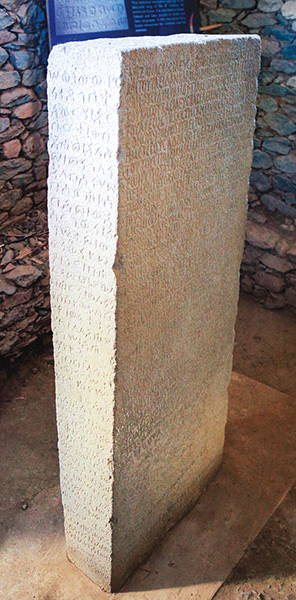Image Details

© Ivan Vdovin/Alamy Stock Photo
ETHIOPIA’S ROSETTA STONE. The Aksumite King Ezana—who ruled in the fourth century C.E.—left behind several inscriptions, one of which is pictured here. This royal inscription is written in two different languages—and three different scripts: Greek, Ge’ez, and Ge’ez using the archaic South Arabian alphabet. This inscription is housed in a hut on Enno Littman Road, on the way from Aksum to the tombs of Caleb and Gabra Masqal. The Ge’ez script is visible on the shorter side of the above left inscription, and Greek is visible on the longer side. The backside of the stone, which is not visible from this image, is inscribed with Ge’ez written in the archaic South Arabian alphabet.
